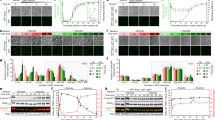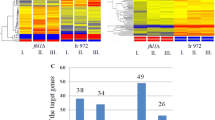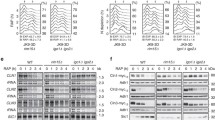Abstract.
A target of rapamycin (TOR) protein is a protein kinase that exerts cellular signal transduction to regulate cell growth in response to extracellular nutrient conditions. In the Schizosaccharomyces pombe genome database, there are two genes encoding TOR-related proteins, but their functions have not been analyzed. Here we report that one of the genes, referred to as tor1 +, is required for sexual development induced by nitrogen starvation. Ste11 is a key transcription factor for the initiation of sexual development. The expression of ste11 + is normally regulated in tor1 – cells; and over-expression of ste11 + hardly rescues the defect in fertility in tor1 –. Upon nitrogen starvation, tor1 + cells promote two rounds of the cell cycle to become arrested at the G1 phase before initiation of sexual development. The tor1 – cells do not promote such a cell cycle, suggesting that Tor1 is necessary for the response to nitrogen starvation. The tor1 – cells show no growth or very slow growth under various stress conditions, including external high pH, high concentrations of salts or sorbitol, and high temperature. These results suggest that Tor1 is necessary for any response to a wide range of stresses. The vegetative growth of tor1 – cells is inhibited by rapamycin, although tor1 + cells are resistant to the drug. The tor1 – cells are hypersensitive to fluphenazine and cyclosporin A, which specifically inhibit calmodulin and calcineurin, respectively.
Similar content being viewed by others
Author information
Authors and Affiliations
Additional information
Electronic Publication
Rights and permissions
About this article
Cite this article
, ., , ., , . et al. Fission yeast Tor1 functions in response to various stresses including nitrogen starvation, high osmolarity, and high temperature. Curr Genet 39, 166–174 (2001). https://doi.org/10.1007/s002940100198
Received:
Accepted:
Issue Date:
DOI: https://doi.org/10.1007/s002940100198




